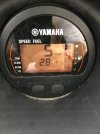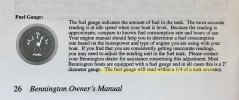Swl5038
New Member
- Messages
- 3
- Reaction score
- 0
My first post, so please excuse me if this has been asked before.
Does anyone have a feel for how accurate the fuel gauge is on a new 2022 pontoon? I’ve got 22 hours on it and it’s sitting at 1/4 tank. Doesn’t seem to be dropping lately.
Thanks for your time
S
Does anyone have a feel for how accurate the fuel gauge is on a new 2022 pontoon? I’ve got 22 hours on it and it’s sitting at 1/4 tank. Doesn’t seem to be dropping lately.
Thanks for your time
S



